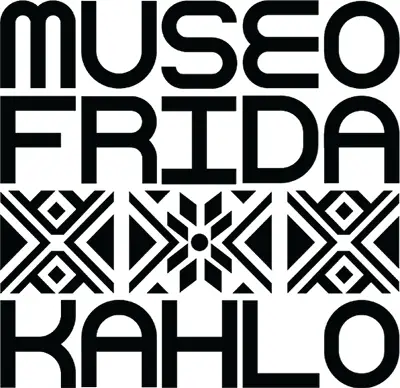La Casa Azul was Frida Kahlo's birthplace, childhood and part of adulthood residence, and her death place. Besides, it was at this house where Kahlo discovered her painting capability, and it played a fundamental role in her life. Today, La Casa Azul is recognised as the Frida Kahlo Museum, an establishment that conserves the most personal things that disclose the private world of Latin America’s most notable female artist.
Frida Kahlo Museum Location
The Museum, also referred to as the Blue House due to its cobalt-blue exterior walls, is located in the Colonia Del Carmen neighbourhood of Coyoacán in Mexico City. It is one of the most well-known and visited museums in Mexico, hosting around 25,000 visitors monthly. The Museum is sorely maintained through the sale of tickets and donations.
The Blue House History
La Casa Azul was constructed in 1904 by Frida Kahlo’s father, Guillermo, and back then, it had a French-inspired design. Kahlo was born in 1907 and spent most of her childhood and early adulthood in the house due to her ongoing health issues. At 18, Kahlo got in a streetcar accident that led to a broken spinal column and other serious injuries. Due to boredom from being bedridden, she began painting. Moreover, her family mounted a mirror on the ceiling of her bedroom to help her create self-portraits.
Frida Kahlo moved out and married Diego Rivera, a painter, in 1931. However, she came back after their divorce eight years later and created her most famous paintings, The Two Fridas and Self-Portrait with Thorn Necklace and Hummingbird.
In 1940, Frida Kahlo and Diego Rivera reconnected and remarried. Just before her father died, they moved into the La Casa Azul and changed its appearance. They spruced the exterior walls with a coat of cobalt blue paint, created a sunny art studio upstairs and filled the patio with Pre-Columbian statues. They lived at La Casa Azul until Frida Kahlo’s death in 1954 after being bedridden from 1950 due to a series of lifelong health problems. In 1958, as per Rivera’s will, the house was donated to Mexico as a museum requesting that the house remain primarily unchanged. It is presently the Frida Kahlo Museum or the Blue House.
Collections within the Frida Kahlo Museum
The collections in the Museum depict the lifestyle of affluent Mexican bohemian artists and intellects during the first half of the 20th century. The house has remained essentially unchanged since 1951 and exhibits the following collections:
- Mexican folk art
- Frida Kahlo's individual art collections
- A huge assemblage of pre-Hispanic artefacts
- Traditional Mexican cookware
- Personal souvenirs that include photographs, letters and postcards
- Paintings by Paul Klee, Diego Rivera and Jose Maria and Velasco
Here is a detailed look at the collections available at the Museum from the exterior to the ground floor and upstairs.
The Exterior
The exterior is breathtaking with beautiful blue walls, Mexican folk art and Rivera's assemblage of pre-Hispanic earthenware.
The Ground Floor
The ground floor has eight rooms: the living room, the dining room, the kitchen, Rivera’s bedroom, and four extra rooms. The living room displays some of the minor paintings by Frida Kahlo including Frida y la cesárea, Retrato de familia, Ruina, Retrato de Guillermo Kahlo, El marxismodarásalud and Diario de Frida.
The kitchen and dining room decor features yellow and blue tiles, handcrafted utensils and traditional pottery. On the walls are small pots organised to spell out the couple’s names. Rivera's bedroom is off the dining room and has his jacket, hat and painting clothes hanging from a wall rack. The first extra room displays their electric art collection and Frida Kahlo’s belongings such as bright clothing and jewellery, medical corsets and prosthetic leg.
The second and third rooms display personal souvenirs and effects and Rivera's works. The second room has photographs, notes and letters that Kahlo frequently used. This room's walls also exhibit pre-Hispanic necklaces and traditional dresses that were Frida Kahlo's trademark. Rivera's paintings in the third room include Retrato de Carmen Portes Gil and Mujer con cuerpo de guitarra. The fourth room exhibits modern paintings by other artists including Celia Calderón Orozco, José María Velasco, Joaquín Clausel and Paul Klee. Besides, there is a sculpture by Mardonio Magaña.
The Upper Floor
The upper floor hosts Frida Kahlo's studio built by Rivera in the 1940s and her final bedroom. Currently, at the Museum, this sunlit studio exhibits her original furniture and art supplies. In one of the bedroom’s corners, Kahlo’s ashes are displayed in a frog-shaped urn surrounded by a funeral mask. Besides, there are also some personal things and mirrors on the ceiling, which she used for self-portraits. On Frida Kahlo's canopy bed is a painted plaster corset that she had to wear to help her injured spine. The bedroom also displays a wide range of Mexican crafts that include papier-mâché puppets and stone sculptures.
Conclusion
Today the Museum hosts numerous Frida Kahlo fans eager to learn more about her art, life and heritage. You can plan a physical trip to the Museum or take a virtual tour of the outstanding Blue House.

